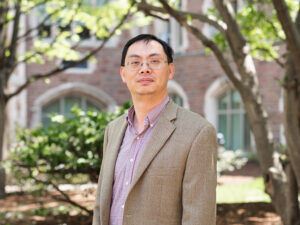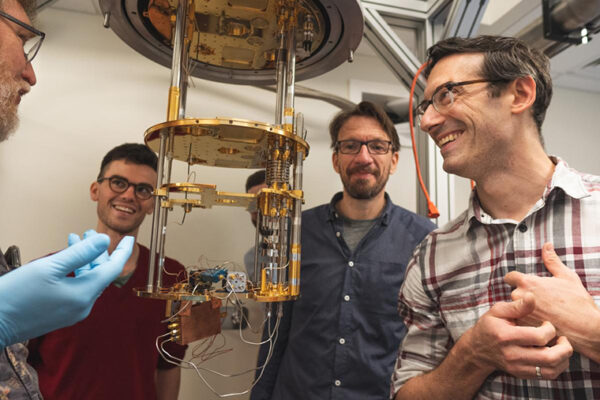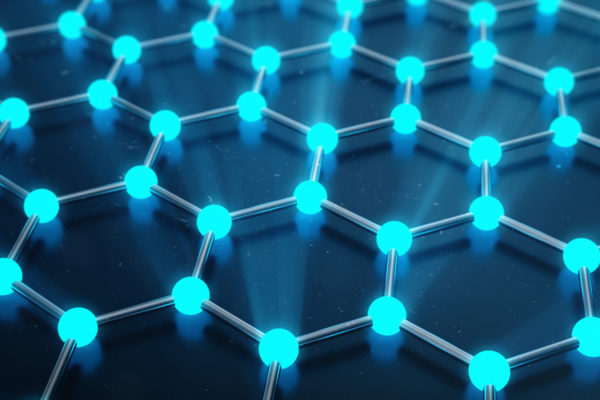
Li Yang, professor of physics in Arts & Sciences at Washington University in St. Louis, conducted research with black phosphorus — a material with a thickness of just a few atomic layers — in a study hailed as a milestone of the past 50 years by the Physical Review B (PRB), an academic journal of the American Physical Society (APS). Yang uses large-scale computing simulations to explore light-matter interactions and optical properties of nanoscale materials.
APS noted that Yang’s influential publication, “Layer-controlled band gap and anisotropic excitons in few-layer black phosphorus,” co-authored with three of his Washington University graduate students in physics — Vy Tran, Ryan Soklaski and Yufeng Liang — stood out among a flurry of research on black phosphorus starting in 2014. The paper has been cited more than 1,600 times during the past six years and continues to motivate further study by Yang and others in his field.
“Using the reliable first-principles method developed in that PRB work to capture interactions of trillions of electrons, we have collaborated with the experimental group led by Fengnian Xia from Yale University to integrate thin film of black phosphorus into transistor structures to tune many-electron interactions,” Yang said.
That work helped to show how black phosphorus could be used in a new generation of smaller devices, flexible electronics and faster transistors.
“Also, inspired by the predictions of narrow gap of 2D black phosphorus in that PRB paper, we are currently exploring topological quantum physics of black phosphorus under extreme conditions, such as applying pressure or electric field,” Yang said. “We are aiming to convert black phosphorus and similar 2D materials into topological insulators, which have been regarded as a potentially new generation of energy-efficient quantum materials.”

